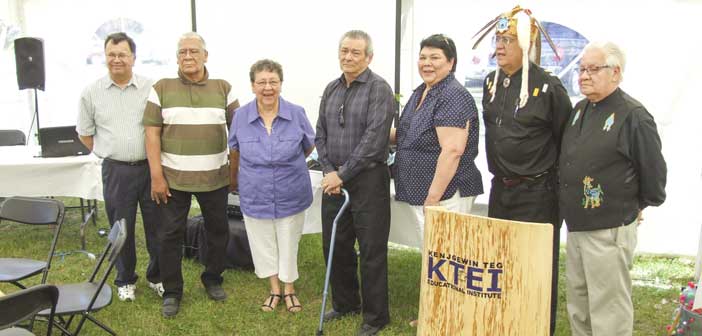GOAT ISLAND—Following concerns raised over spring run-off from the unseemly, tarped over pile located on Goat Island, a property owned by Canadian Pacific Railway (CPR), just north of the Little Current swing bridge, work has been done to regrade the land with surface water drainage control measures now in place.
“The work being done on Goat Island is to make sure the site is being properly maintained and not causing impacts to the surrounding environment and the ministry has required that CPR take the following actions: prepare a detailed monitoring plan for the site and develop a plan to control and mitigate runoff from the site to ensure the site does not pose a risk,” Steven Moggy, senior environmental office with the Sudbury office of the Ministry of Environment (MOE), told The Expositor in an email last week.
“As part of this ongoing work, the company is currently modifying and re-grading the area around the tarped stockpile,” he continued. “This is to redirect storm water away from the stockpile to prevent runoff from the site.”
The re-grading work, he added, arose from concerns that storm water runoff from the site was not being properly contained on site. “To prevent the metals being stored at the site from impacting local surface water, storm water at the site will now be directed away from the tarped area,” Mr. Moggy said.
Mr. Moggy said the ministry would continue to monitor the work the company is doing at the site to ensure it does not pose any off-site impacts to the environment “and will continue to inspect the site to this end.”
[pullquote]The items under the tarp are considered to be commodities, Mr. Moggy said. “They include coal, iron ore pellets, zinc and cadmium concentrate, coke and iron sulphide, as well as the excavated materials consisting of a zinc concentrate-coal-soil mixture generated during the realignment of the highway.”[/pullquote]
The aggregate that is contained in the tarped over pile contains samples of virtually everything that moved in and out of the CPR dock at Goat Island when that site functioned as an active port with various materials incoming by ship, such as coal, and being offloaded into the dock area by crane and stored there until they were hauled away by train. Conversely, materials such as the low-grade iron ore in pellet form was a by-product of INCO’s smelting process and was brought to the dock area by train to be stored until it was sold and loaded onto cargo vessels for delivery to customers.
Mr. Moggy explained that the MOE conducts both formal inspections of the Goat Island site as well as site visits arising from any concerns or questions about work at the site.



